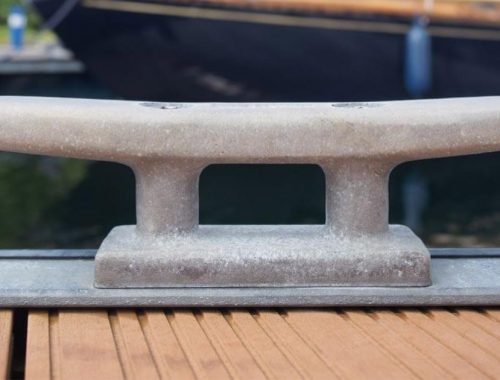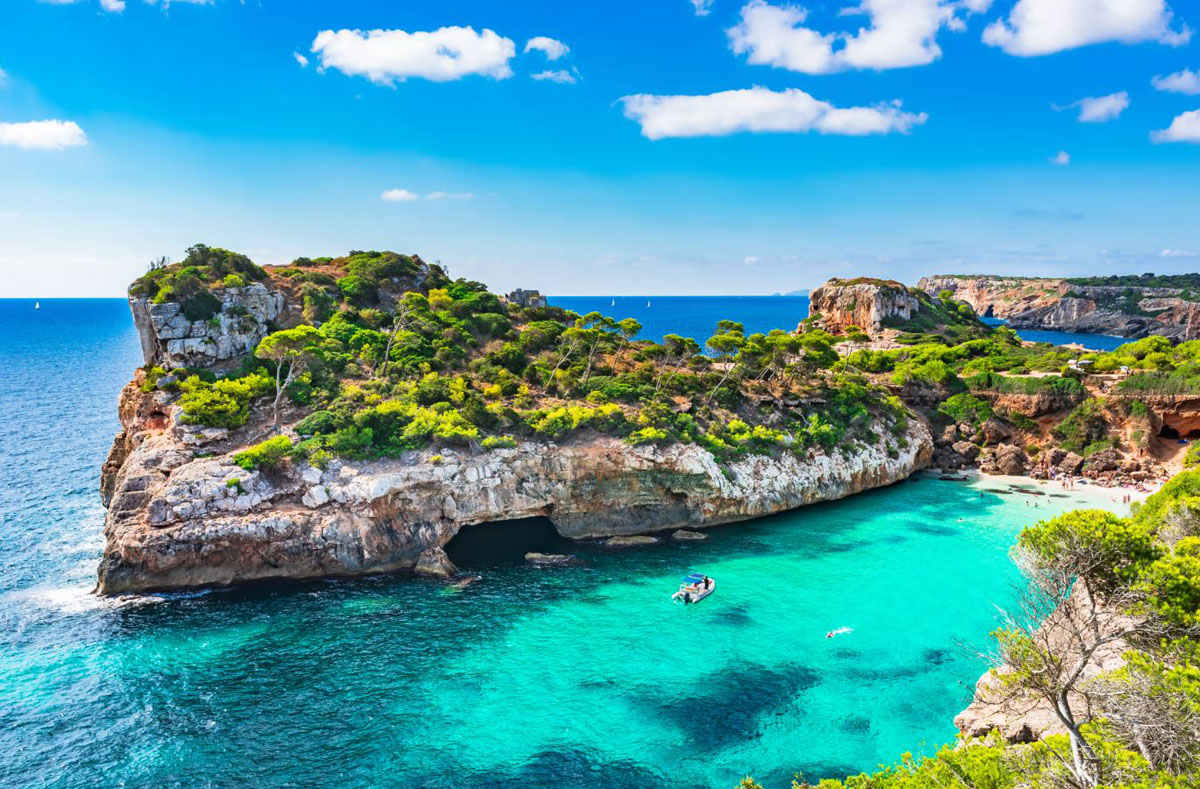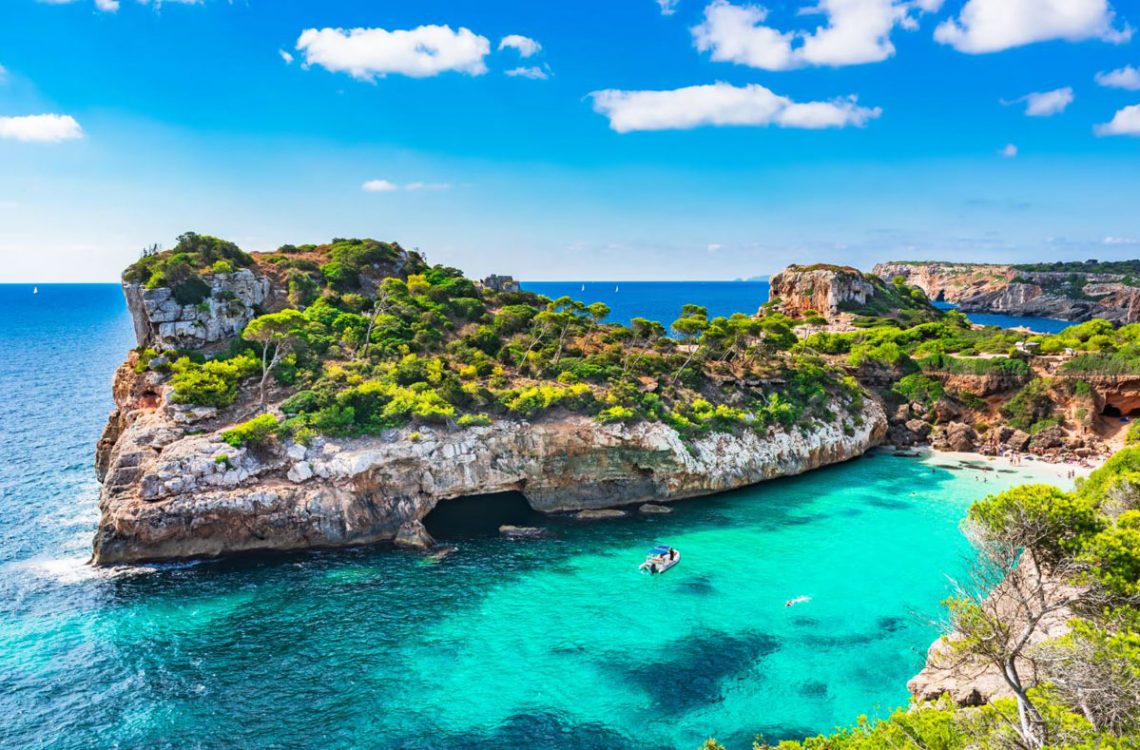
Balearic Islands: Sailing among the Wonders of Cabrera National Park
Among the most popular Mediterranean destinations for sailors are certainly the Balearic Islands. Everyone knows Formentera, Ibiza, Menorca, and Mallorca, but few are familiar with a true hidden gem nestled among them: the Cabrera Archipelago. This natural paradise consists of two larger islands and 17 small islets, home to a Maritime National Park rich in marine life and some of Europe’s most pristine environmental diversity.
The Cabrera Archipelago lies about 10 miles south of Cabo Salines, on Mallorca’s southern coast, and never fails to amaze visitors with its stunning landscapes of green surrounded by deep blue waters: rugged coastlines, secluded coves, sea caves, and dense Mediterranean scrubland with juniper, mastic, and Aleppo pine forests that provide shelter for migratory birds, as well as historical sites.
Read also: Balearic Islands: many efficient ports in charming places
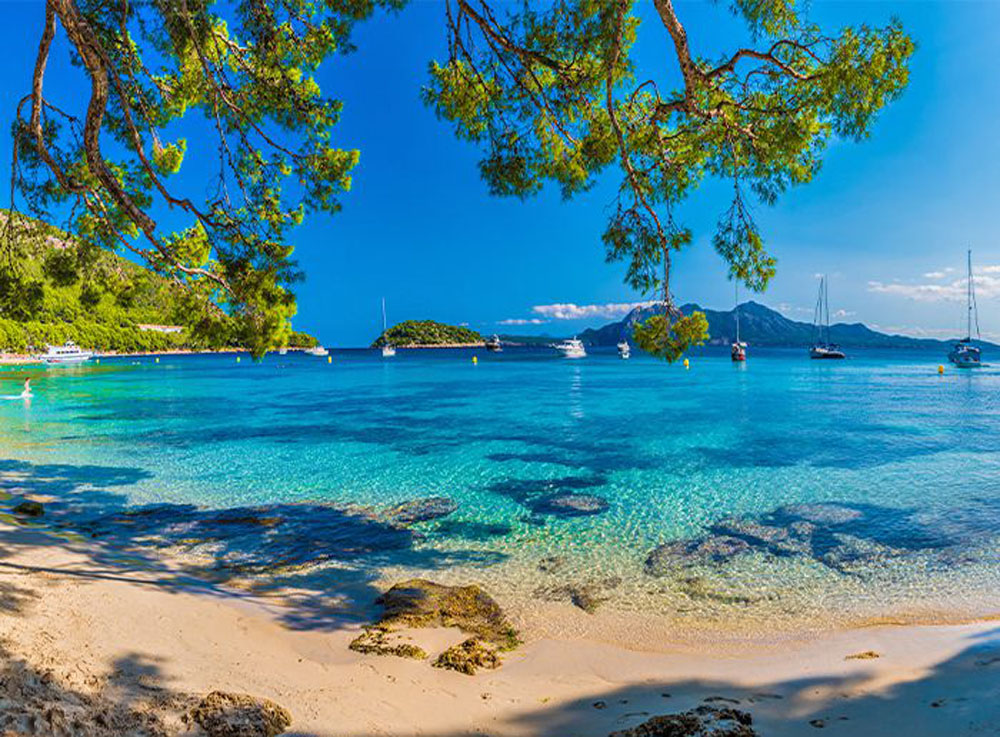
A pristine and protected, yet accessible place
The same waters that surround this marine and terrestrial park, established in 1991, are among the best examples of marine life in the entire Mediterranean. The seabed is home to corals, groupers, polyps, common turtles, and dolphins, as well as one of the best-preserved Posidonia meadows in the Mediterranean Sea. To protect this natural oasis, access to the Cabrera Archipelago is limited and subject to numerous restrictions, both for navigation and anchoring.
The park authorities, however, allow a certain number of visits for sailors, with mooring spots available by reservation and guided tours along the coasts and inland of the various islands. In short, the Cabrera Archipelago is a Spanish sailing destination that offers a wealth of emotions, adventure, and relaxation.

Day 1, Palma de Mallorca, Ca’n Pastilla, embarkation
The nautical base for our cruise through the Cabrera Archipelago is the port of Ca’n Pastilla, a tourist town near the capital, Palma de Mallorca, and the Son Sant Joan International Airport, on the southern coast of Mallorca. The town was developed in 1918 as a tourism project by entrepreneur D. Bartolome Riutort. From the 1960s onward, it became a favorite destination for both Spaniards and the British, and even today, despite some haphazard urban development, it hosts luxury resorts, British-themed bars and cafés, alongside local Majorcan establishments, boutiques, and daily markets selling fish, flowers, and other local products. The long seafront stretching to the city of Palma is dotted with “Balnearios” serving drinks and snacks and is always busy with cyclists, walkers, skaters, and strolling visitors.
Ca’n Pastilla has two fairly large and popular beaches, frequented even by locals: Cala Estancia and Platja d’Or, the latter being a favorite among the island’s surfers. Other points of interest include the small Church of Sant Antonio de la Playa in the town center and the famous Acqualand water park.
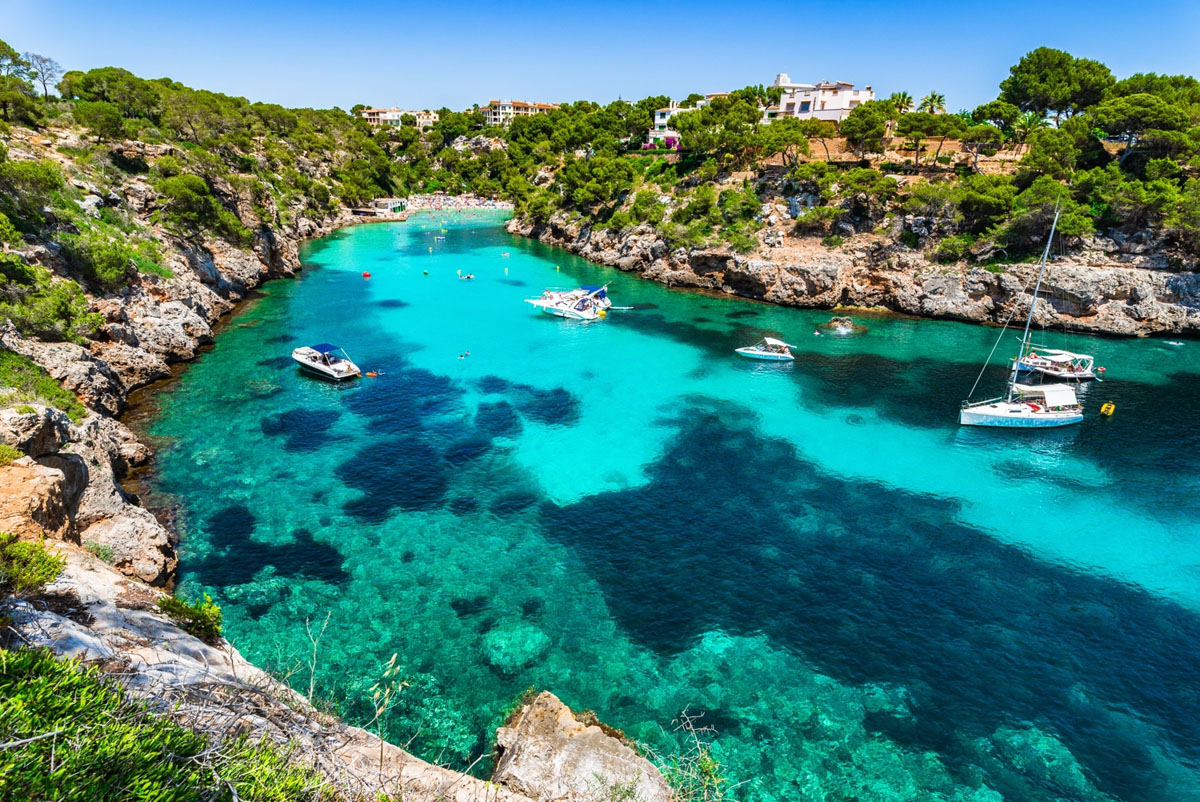
Day 2, Ca’n Pastilla – Cala Pi, 15 miles
We weigh anchor and enjoy a pleasant two-hour sail to reach the small and romantic Cala Pi, named after the pine trees that surround it. This charming cove is located on the southern coast of Mallorca and is certainly one of the island’s most popular and photographed spots. Its unique setting is what makes it special: the cove stretches about 500 meters inland and is flanked by two rocky cliffs around 30 meters high, covered in lush vegetation where secluded residences with discreet architectural designs peek through. A small river also runs alongside the beach.
Arriving by sea, you can anchor in front of the bay on the gently sloping seabed, while access from land is via a steep panoramic staircase. The waters of Cala Pi are perfect for diving. From the beach, a trail leads to the Cala Pi Tower, an ancient watchtower, and the so-called Talaiot de Son Noguero, an ancient Talayotic settlement. A little further away, you can also visit the Cap Blanc Lighthouse, one of Mallorca’s oldest.
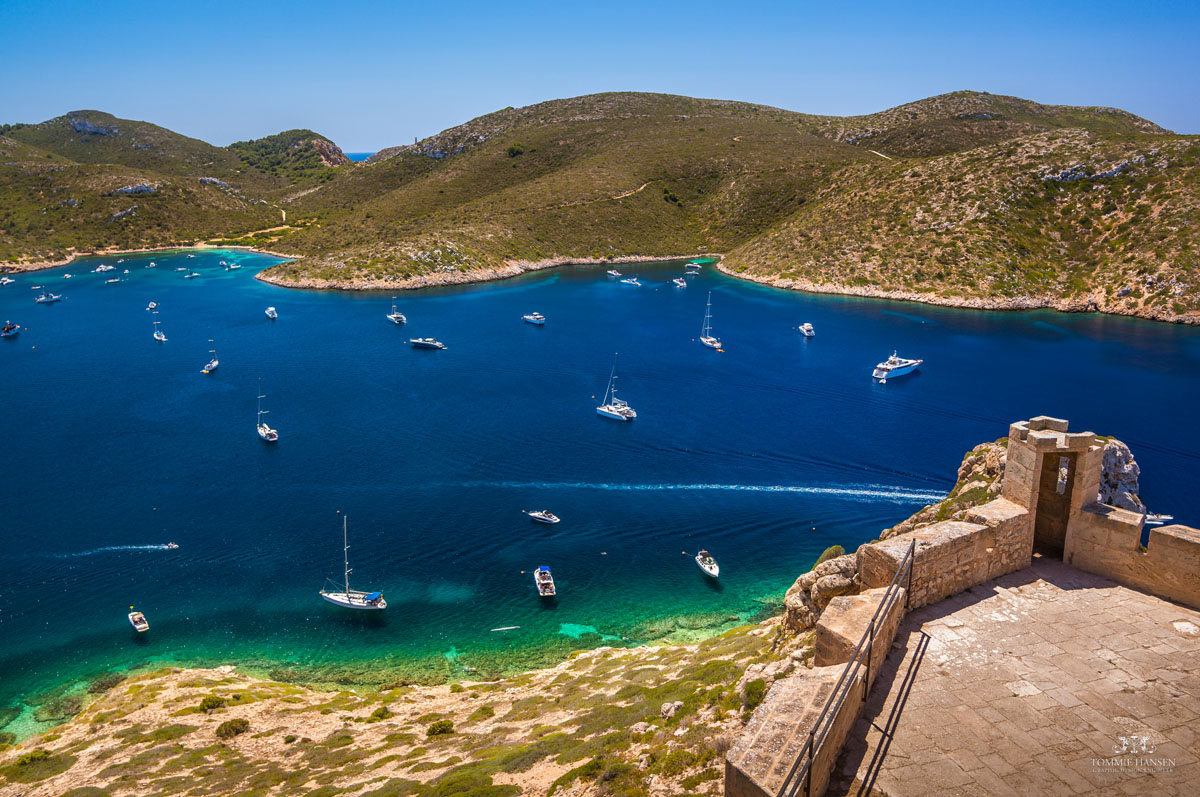
Day 3, Cala Pi – Cabrera, 15 miles
From Cala Pi, it’s just 15 miles to enter the Cabrera National Park, with a stop at its largest island. Overnight permits for boats must be requested at least three weeks in advance, and upon arrival, a mooring buoy is assigned. Once ashore, there are eight guided trails that traverse the island. While not particularly long, given Cabrera’s small size, it is still advisable to take precautions against the sun and heat, especially during spring and summer.
One of the most scenic trails leads to Cabrera Castle, perched over 70 meters above the sea. This 16th-century structure offers the best vantage point on the island, as well as a prime spot to enjoy breathtaking sunrises and sunsets. From the tower, you can admire spectacular views of the islet of Sa Conillera, the harbor mouth with Punta de Sa Creueta and Cap de Llebeig, the bays of S’Espalmador and Sa Platgeta, and the small, inaccessible Caló des Forn. The castle is what remains of a large internment camp for French soldiers during the Napoleonic Wars.
Other trails lead to three beaches—Sa Platgeta, Platja d’es Pagès, and S’Empalmador— or to the old lighthouse, or to the Sa Cova Blanca sea cave with its captivating light effects, also accessible by swimming. Don’t miss the Es Celler Ethnographic Museum located inland, where you can learn about Cabrera’s history, see historical fishing tools, and explore the small botanical garden.
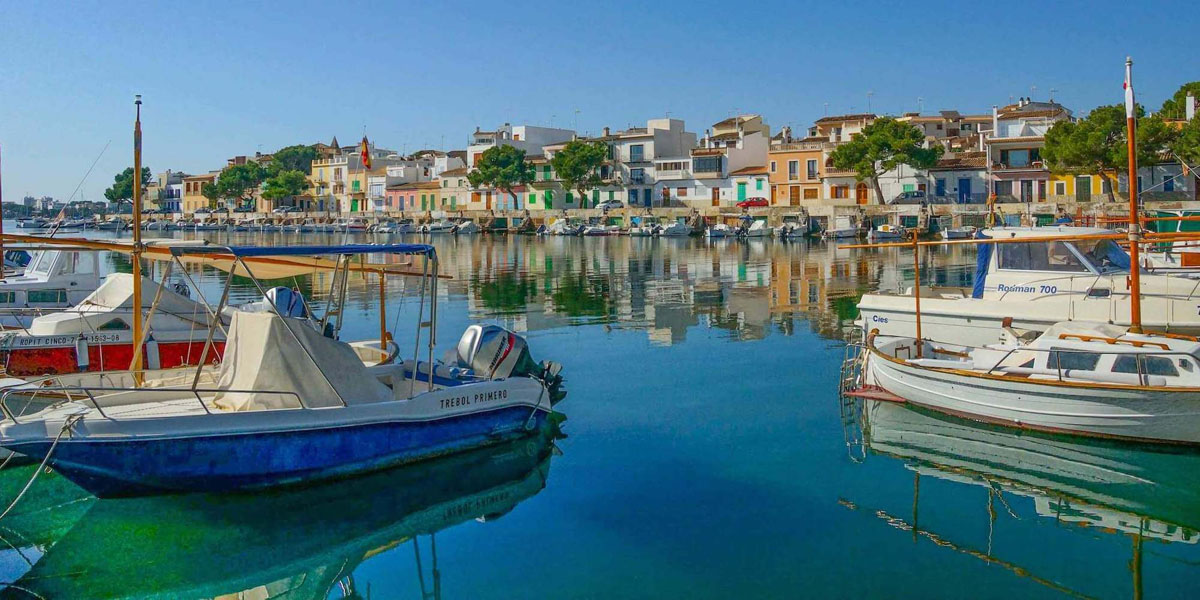
Day 4, Cabrera – Portocolom, 24 miles
We weigh anchor and set sail for Portocolom, located on Mallorca’s eastern coast between Porto Cristo and Cala d’Or. Once a fishing village, it is now a popular tourist destination. The name Portocolom is linked to a local belief that it was the actual birthplace of Christopher Columbus (Cristobál Colóm in Spanish). The town is built around a peaceful cove, with old fishermen’s houses painted in different colors, each with its own pier where traditional Majorcan boats, called llaut, are moored.
From the port, it’s easy to reach Plaza Sant Jaume, the main square, where the Mare del Carmen Church, a neo-Gothic building from the late 19th century, stands. Behind the square stretches the small historic center known as Es Riutò. A walk also leads to the Portocolom Lighthouse, a symbol of the town, while a great viewpoint is Puig de Sant Salvador, the highest peak in the area, offering stunning views of the entire Pla de Mallorca. At the top is an ancient monastery and a 14-meter-high cross, the Cruz de Picot.
Nature lovers and hikers will enjoy Parc Natural Mondrago, the old village of Santanyi, Castillo de Santueri, and the Dragon Caves. The most popular beach in Portocolom is Cala Marcal, but S’Arenal, S’Algar, and Cala Sa Nau are also beautiful. Just outside Portocolom is Vall d’Or Golf Club, one of Mallorca’s finest golf courses.
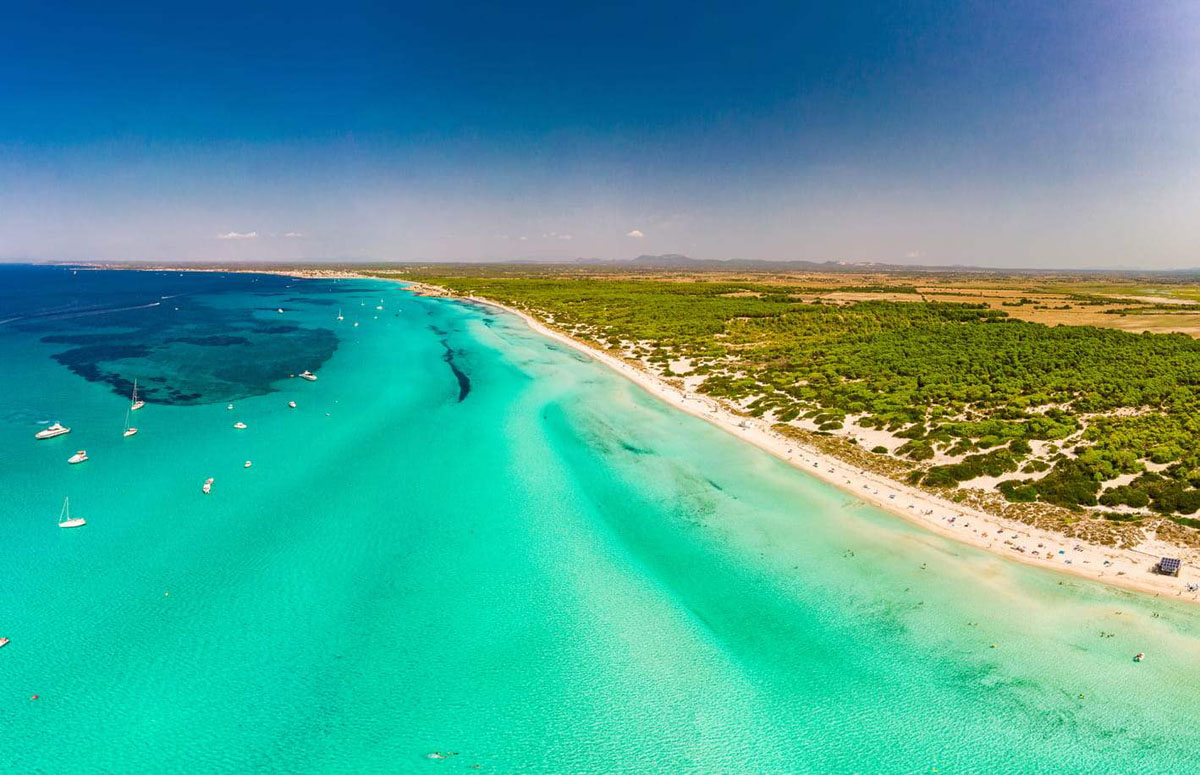
Day 5, Portocolom – Sa Ràpita, 25 miles
From Portocolom, we set course for Sa Ràpita, a popular marina, especially during the high season. It is located on Mallorca’s southern coast within the municipality of Campos. In calm conditions, it is also possible to spend the night at one of the mooring buoys located about 2 miles southeast of the small Isla Gabina. Right next to the port lies the famous Es Trenc beach, a magical place considered one of the island’s best. It features natural dunes, is surrounded by pine trees, and its fine sand meets clear blue waters. The beach stretches for about 2 miles from Sa Ràpita along the coast, passing the small town of Ses Covetes and reaching the larger town of Colonia Sant Jordi.
Sa Ràpita was once a stronghold against attacks by Saracen pirates. Evidence of this can be seen in the old watchtower of Son Duri near the port. From the 16th to the 19th century, it was used to alert the city of Palma of possible invading attacks. Today, Sa Ràpita is a highly appreciated stop for sailors exploring Mallorca because it lies off the main routes while offering a beautiful and secluded coastline, making it a favored spot for naturist tourism.
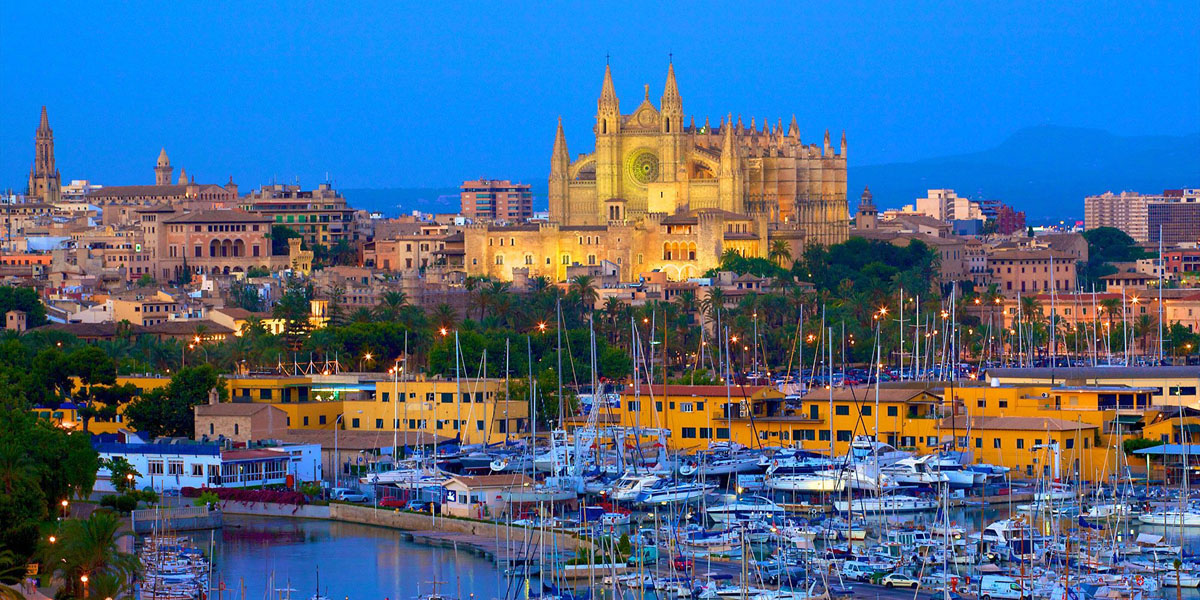
Day 6, Sa Ràpita – Palma de Mallorca, 24 miles
After the calm of Sa Ràpita, it’s time to dive into the lively and colorful Palma de Mallorca. Once moored in the city’s port, you can explore the historic center, where tapas bars, restaurants, and cafés are nestled among splendid Gothic buildings, such as the impressive Cathedral of Santa Maria. Also worth visiting are the Arab Baths, a testament to Mallorca’s glorious past under Arab rule, and the Sobrasada Museum, dedicated to the island’s famous spicy and flavorful sausage. Art lovers can admire the Fundació Joan Miró and the Es Baluard Museum, which features works by Picasso, Magritte, and Cézanne.
For those seeking relaxation, S’Arenal is the ideal spot, the largest beach in Palma de Mallorca, with fine white sand surrounded by Mediterranean scrub. Alternatively, you can anchor at Cala Pastilla to the east of the city or Cala Estancia just outside town, which is also the starting point for numerous hiking and cycling trails.
Day 7, Palma de Mallorca – Ca’n Pastilla, 5 miles
We have reached the end of this exciting cruise through the Balearic Islands, particularly the Cabrera Archipelago. The return journey to our nautical base at Ca’n Pastilla takes only about an hour of sailing, with opportunities for swims and stops along sheltered bays depending on the wind. Just enough time to savor once more this special corner of paradise in the Mediterranean.
You May Also Like
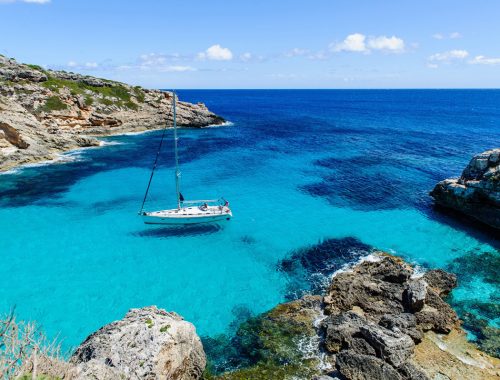
How to anchor safely and enjoy the bays
28/03/2024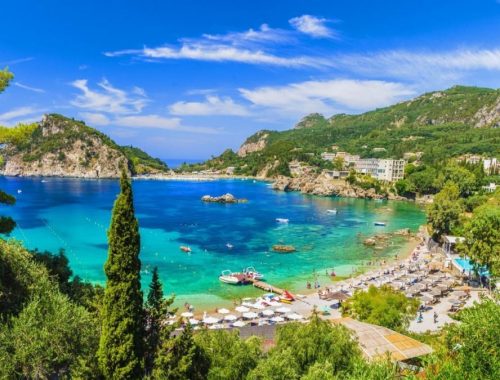
Sailing along the northern coast of Corfu, an island that celebrates life
22/01/2025